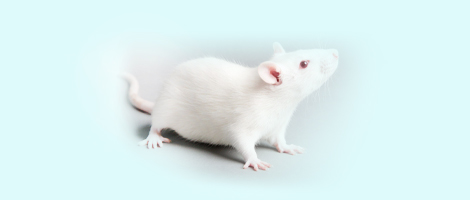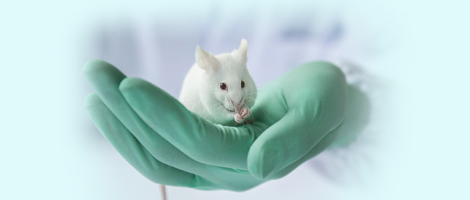| 1 |
HANIFIN J P, DAUCHY R T, BLASK D E, et al. Relevance of electrical light on circadian, neuroendocrine, and neurobehavioral regulation in laboratory animal facilities[J]. ILAR J, 2020, 60(2):150-158. DOI: 10.1093/ilar/ilaa010 .
|
| 2 |
ZHANG Z, BEIER C, WEIL T, et al. The retinal ipRGC-preoptic circuit mediates the acute effect of light on sleep[J]. Nat Commun, 2021, 12(1):5115. DOI: 10.1038/s41467-021-25378-w .
|
| 3 |
刘贵珍, 柴艺汇, 王庆学, 等. 光照时长及昼夜饮食节律对大鼠糖脂代谢及单胺类神经递质的影响[J]. 中兽医学杂志, 2023(11):4-6. DOI: 10.19656/j.cnki.1002-2406.180039 .
|
|
LIU G Z, CHAI Y H, WANG Q X, et al. Effects of light duration and circadian diet rhythm on glucose and lipid metabolism and monoamine neurotransmitters in rats[J]. Chin J Tradit Vet Sci, 2023(11):4-6. DOI: 10.19656/j.cnki.1002-2406.180039 .
|
| 4 |
CAIN S W, MCGLASHAN E M, VIDAFAR P, et al. Evening home lighting adversely impacts the circadian system and sleep[J]. Sci Rep, 2020, 10(1):19110. DOI: 10.1038/s41598-020-75622-4 .
|
| 5 |
JONG M D, LAMERS K P, EUGSTER M, et al. Effects of experimental light at night on extra-pair paternity in a songbird[J]. J Exp Zool A Ecol Integr Physiol, 2018, 329(8-9):441-448. DOI: 10.1002/jez.2193 .
|
| 6 |
WYSE C A, SELMAN C, PAGE M M, et al. Circadian desynchrony and metabolic dysfunction; did light pollution make us fat?[J]. Med Hypotheses, 2011, 77(6):1139-1144. DOI: 10.1016/j.mehy.2011.09.023 .
|
| 7 |
AN K, ZHAO H, MIAO Y, et al. A circadian rhythm-gated subcortical pathway for nighttime-light-induced depressive-like behaviors in mice[J]. Nat Neurosci, 2020, 23(7):869-880. DOI: 10.1038/s41593-020-0640-8 .
|
| 8 |
陈洪丽, 高静静, 姜忠迪, 等. 光疗对睡眠剥夺小鼠学习记忆以及BDNF-TrkB信号通路的影响[J]. 中国激光, 2022, 49(5):0507401. DOI: 10.3788/CJL202249.0507401 .
|
|
CHEN H L, GAO J J, JIANG Z D, et al. Effects of phototherapy on learning memory and BDNF-TrkB signaling pathway in sleep-deprived mice[J]. Chin J Lasers, 2022, 49(5):0507401. DOI: 10.3788/CJL202249.0507401 .
|
| 9 |
彭鸿碧, 贾婷, 朱万龙, 等. 交通噪音对中缅树鼩行为、学习记忆和氧化应激的影响[J]. 兽类学报, 2021, 41(2):164-172. DOI: 10.16829/j.slxb.150479 .
|
|
PENG H B, JIA T, ZHU W L, et al. Effects of traffic noise on behavior, learning and memory and oxidative stress in Tupaia belangeri [J]. Acta Theriol Sin, 2021, 41(2):164-172. DOI: 10.16829/j.slxb.150479 .
|
| 10 |
彭鸿碧, 贾婷, 王政昆, 等. 光照对哺乳动物学习和记忆的影响及其机制研究进展[J]. 野生动物学报, 2022, 43(2):557-561. DOI: 10.12375/ysdwxb.20220238 .
|
|
PENG H B, JIA T, WANG Z K, et al. Research advance on the effects of light on learning and memory in mammalian and their mechanisms[J]. Chin J Wildl, 2022, 43(2):557-561. DOI: 10.12375/ysdwxb.20220238 .
|
| 11 |
张昊康, 范腾飞, 刘鹏, 等. 光照时长对小鼠情绪及认知活动的影响[J]. 中华行为医学与脑科学杂志, 2016, 25(8):673-676. DOI: 10.3760/cma.j.issn.1674-6554.2016.08.001 .
|
|
ZHANG H K, FAN T F, LIU P, et al. Effect of illumination time on emotion and cognitive activities in mice[J]. Chin J Behav Med Brain Sci, 2016, 25(8):673-676. DOI: 10.3760/cma.j.issn.1674-6554.2016.08.001 .
|
| 12 |
谢雯, 孟凯, 王兴会, 等. 光照对发育期小鼠体重和学习记忆的影响[J]. 西安交通大学学报(医学版), 2010, 31(5):536-538, 569. DOI: CNKI:SUN:XAYX.0.2010-05-005 .
|
|
XIE W, MENG K, WANG X H, et al. Effects of light on body weight, learning and memory of growing mice[J]. J Xi'an Jiaotong Univ Med Sci, 2010, 31(5):536-538, 569. DOI: CNKI:SUN:XAYX.0.2010-05-005 .
|
| 13 |
田晓康, 仲蕊, 钱冰, 等. 光照强度和光照时间对性未成熟小鼠雌二醇的影响[J]. 中国儿童保健杂志, 2015, 23(2):150-152. DOI: 10.11852/zgetbjzz2015-23-02-12 .
|
|
TIAN X K, ZHONG R, QIAN B, et al. Effect of illumination intensity and time on estradiol of immature mouse[J]. Chin J Child Health Care, 2015, 23(2):150-152. DOI: 10.11852/zgetbjzz2015-23-02-12 .
|
| 14 |
佘丽芝, 罗嘉惠, 张华, 等. 持续光照对大鼠血糖和体重的影响[J]. 中外医学研究, 2018, 16(12):15-16. DOI: 10.14033/j.cnki.cfmr.2018.12.006 .
|
|
SHE L Z, LUO J H, ZHANG H, et al. Effects of continuous light on blood glucose and body weight in rats[J]. Chin Foreign Med Res, 2018, 16(12):15-16. DOI: 10.14033/j.cnki.cfmr.2018.12.006 .
|
| 15 |
ULGHERAIT M, MIDOUN A M, PARK S J, et al. Circadian autophagy drives iTRF-mediated longevity[J]. Nature, 2021, 598(7880):353-358. DOI: 10.1038/s41586-021-03934-0 .
|
| 16 |
POTTER G D M, CADE J E, GRANT P J, et al. Nutrition and the circadian system[J]. Br J Nutr, 2016, 116(3):434-442. DOI: 10.1017/S0007114516002117 .
|
| 17 |
谭吉凤, 肖轶卉, 王果, 等. 高脂饮食联合光照周期改变对不同性别小鼠体重的影响[J]. 现代生物医学进展, 2022, 22(10):1817-1820, 1855. DOI: 10.13241/j.cnki.pmb.2022.10.004 .
|
|
TAN J F, XIAO Y H, WANG G, et al. Effects of eigh fat diet combined with light cycle change on body weight of mice with different sex[J]. Prog Mod Biomed, 2022, 22(10):1817-1820, 1855. DOI: 10.13241/j.cnki.pmb.2022.10.004 .
|
| 18 |
KETELAURI P, SCHAROV K, VON GALL C, et al. Acute circadian disruption due to constant light promotes caspase 1 activation in the mouse hippocampus[J]. Cells, 2023, 12(14):1836. DOI: 10.3390/cells12141836 .
|
| 19 |
ROTINEN M. "defining the independence of the liver circadian clock" & "BMAL1-driven tissue clocks respond independently to light to maintain homeostasis"[J]. Front Neurosci, 2020, 14:107. DOI: 10.3389/fnins.2020.00107 .
|
| 20 |
BEDROSIAN T A, WEIL Z M, NELSON R J. Chronic dim light at night provokes reversible depression-like phenotype: possible role for TNF[J]. Mol Psychiatry, 2013, 18(8):930-936. DOI: 10.1038/mp.2012.96 .
|
| 21 |
FERNANDEZ D C, FOGERSON P M, LAZZERINI OSPRI L, et al. Light affects mood and learning through distinct retina-brain pathways[J]. Cell, 2018, 175(1):71-84.e18. DOI: 10.1016/j.cell.2018.08.004 .
|
| 22 |
HUANG X D, HUANG P C, HUANG L, et al. A visual circuit related to the nucleus reuniens for the spatial-memory-promoting effects of light treatment[J]. Neuron, 2021, 109(2):347-362.e7. DOI: 10.1016/j.neuron.2020.10.023 .
|







 )(
)( ), LI Huaiyin, LIAN Xiaodi, WEI Juanpeng, GAO Ming(
), LI Huaiyin, LIAN Xiaodi, WEI Juanpeng, GAO Ming( )(
)( )
)